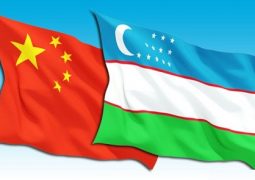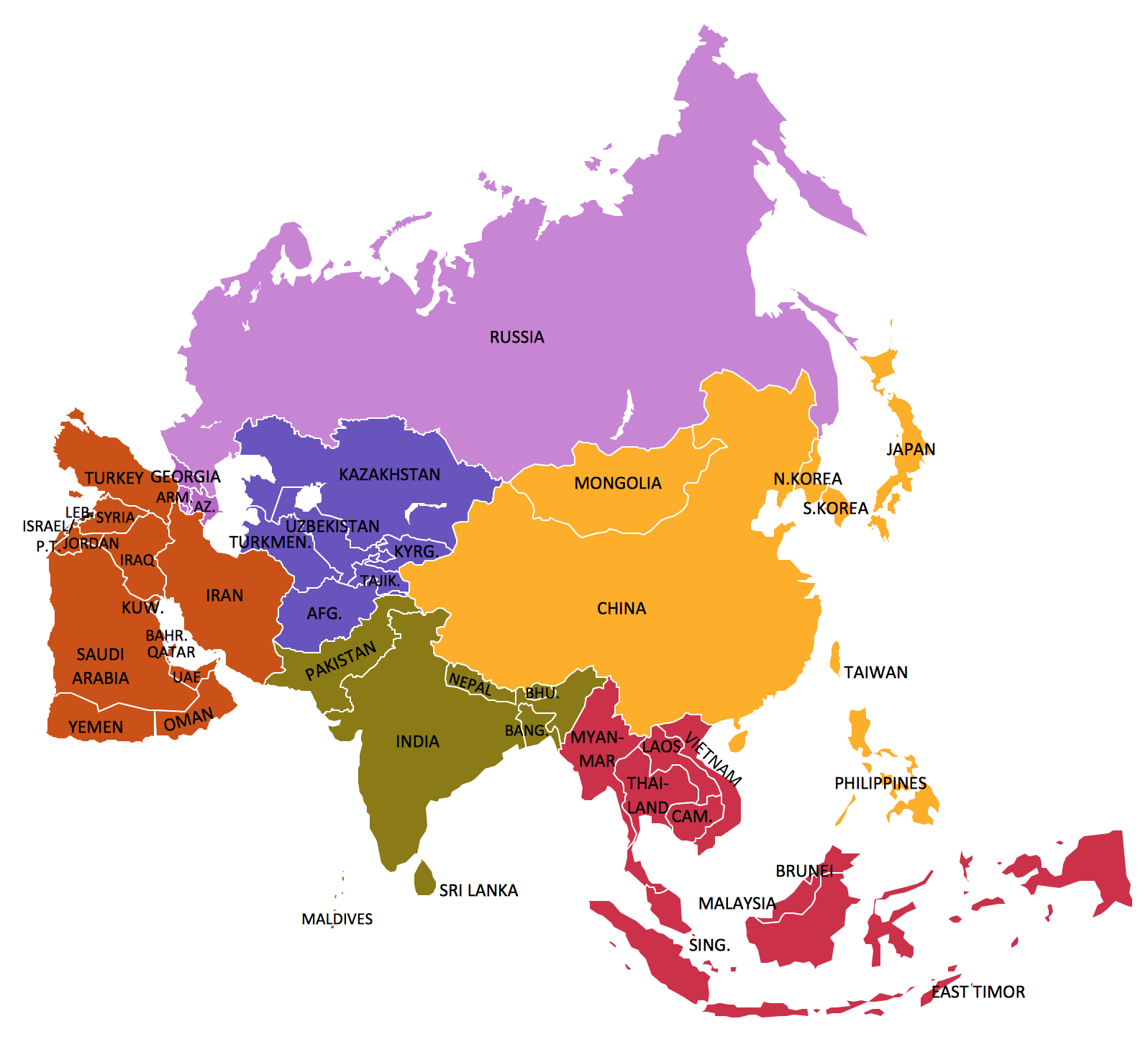Turkmenistan’s emulation of the Tajik fruit arrangements’ festivities: Tajik and Turkmen Feasts Amid Everyday Shortages

Tajik products exhibition in Astana, August 2025; image: Akimat of Astana
Pyramids of various kinds of melons, fruits laid across the ground to form intricate, traditional patterns, as well as an abundance of fruit, dried fruit, nuts, and bread overflowing from tables, and even fountains, surrounding the edible ground arrangement, and grapes hanging from poles.
As an advertisement for national products, a background for international events, or a gift for an ally, Tajikistan is gaining fame for elaborate displays of fruit. It is an amazing sight, with fruits and nuts arranged in patterns that cover large areas of the pavilions and gardens where foreign guests are being entertained.
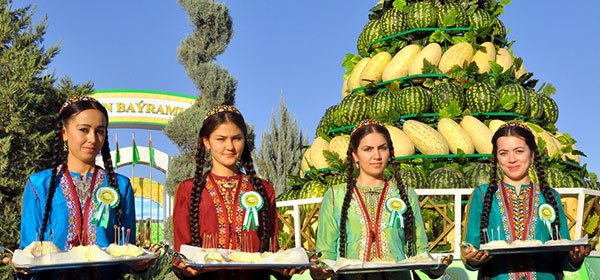
However, as good as these lavish presentations look and taste, these cornucopias are being exhibited in some of Central Asia’s poorest countries, and, unsurprisingly, there has been some discontent and some scandals.
For Sale
On August 16-17, there was an exhibition of Tajikistan’s products and crafts in the Kazakh capital, Astana, with melon pyramids taking center stage in an exhibition that also featured “over a thousand tons of products: fresh fruits and vegetables, nuts, [and] dried fruits.“It was a return performance for the Tajik “masters” who arrange the exhibitions. Astana hosted a fair of Tajik products in August 2023 that drew a big crowd, some of whom were overly anxious to get their hands on the goods. Dozens of people started taking melons and grapes from the pyramids, breaking shelves and decorations in the process.
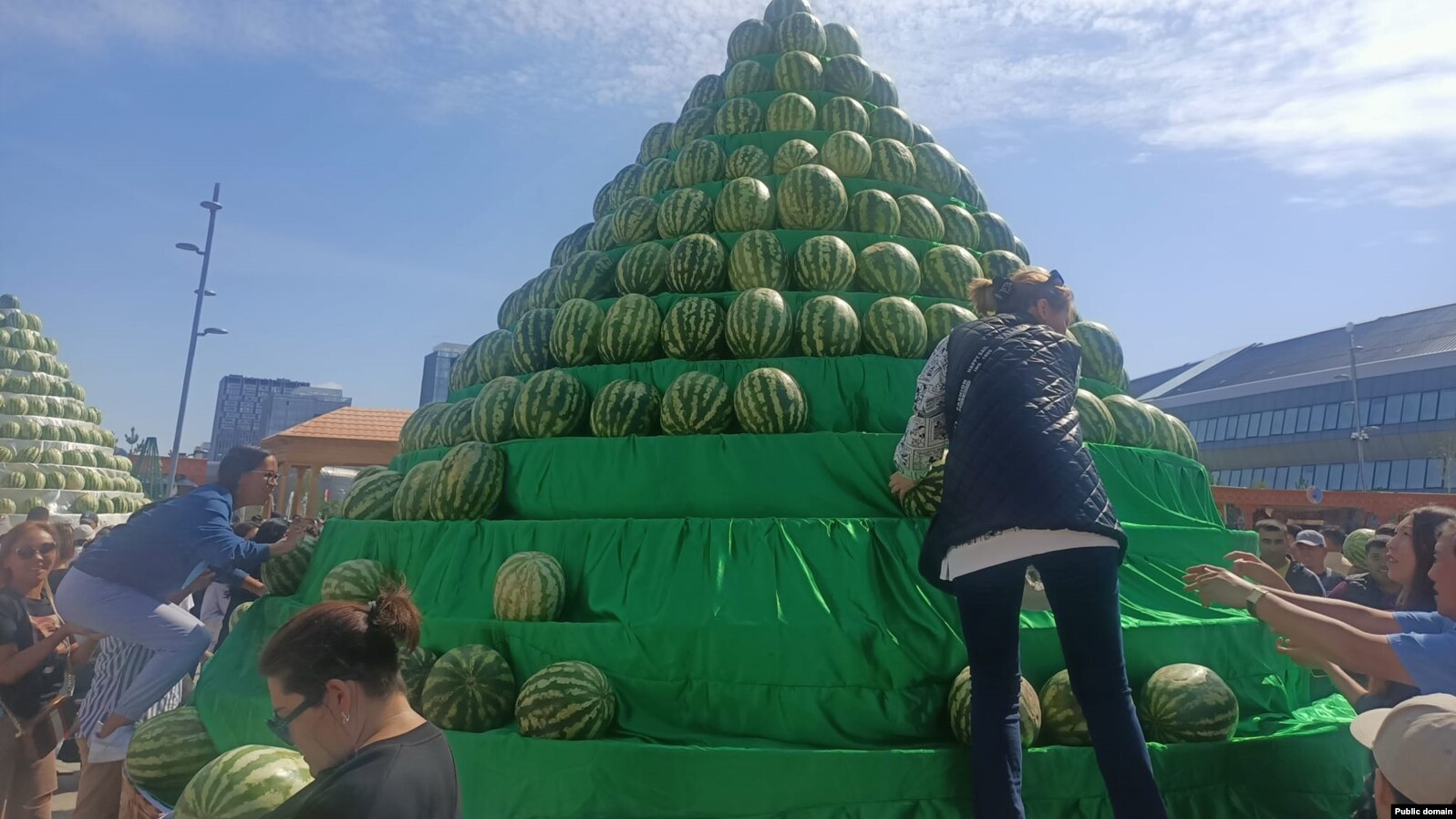
Tajik fair in Astana, 2023; image: public domain
Impress the Guests
One of the most memorable grand displays of fruit occurred when Tajikistan hosted the summit of leaders from the Commonwealth of Independent States (CIS) on September 27, 2018. On the eve of the summit, Tajik President Emomali Rahmon walked his guests through a garden flanked by enough food to feed a small town for a month. It was the first time such a spread had been laid out for guests at an international gathering, with Rahmon seeming to appreciate having an agricultural background when hosting a diplomatic event.

In July 2019, Rahmon met with then-Kyrgyz President Sooronbai Jeenbekov in the northern Tajik town of Isfara. Conflicts along the Kyrgyz-Tajik border were becoming increasingly deadly, and the two presidents met to discuss ways to ease tensions and resolve the festering problems along the frontier.
While the two presidents talked, Rahmon guided Jeenbekov through “6 pyramids… of watermelons and melons, as well as almost 20 types of national breads.“

Sooronbay Jeenbekov and Emomali Rahmon in Isfara; image: press service of the President of the Republic of Tajikistan
When Dushanbe hosted the Shanghai Cooperation Organization (SCO) summit in September 2021, the feast on the eve of the summit was every bit the equal of the CIS summit in 2018 and featured “huge pyramids of fragrant melons and watermelons, carpets of fresh fruit, grapes cascading like a waterfall, and even fountains of melons.”
Rahmon brought his fruit feast to St. Petersburg in October 2022 when CIS leaders gathered for an informal CIS summit that coincided with Russian President Vladimir Putin’s 70th birthday. The colorful and edible display was again present when Tajikistan hosted the meeting of Central Asian leaders in September 2023.
Someone in Turkmenistan seems to think the Tajik fruit decoration created a good atmosphere for an international event.
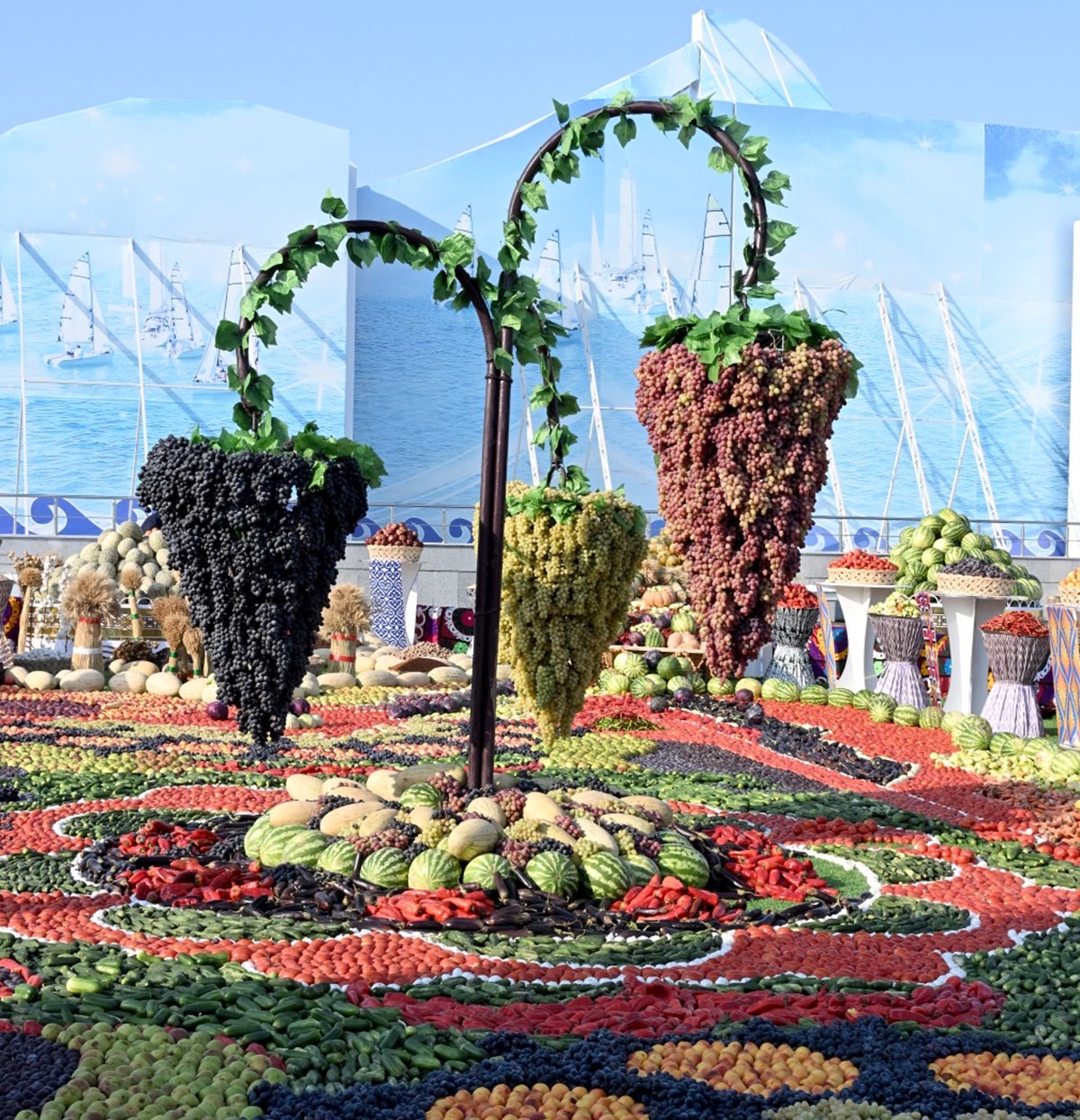
UN Conference in Awaza; image: tdh.gov.tm
Turkmenistan just hosted the UN conference on Landlocked Developing Countries at the Caspian resort city of Awaza on August 5-8. Turkmen state media reported that guests were treated to the “ecologically clean and high-quality vegetables, fruits, greens and berries grown in the favorable climatic conditions of the country” in a display that rivaled those seen in Tajikistan during the CIS and SCO summits. Turkmen state media reports added that the abundance of produce “indicates the successful implementation of modern agricultural technologies aimed at increasing crop yields.”
Let Them Eat Cake
The question every time the melon pyramids, fruit carpets, and hanging grapes appear at these events is, how, or why are these governments doing this when so many people in Tajikistan and Turkmenistan are going hungry?
The reported average monthly wage in Tajikistan is the equivalent of about $279, but many people earn less than half that. If it were not for the remittances sent back to families in Tajikistan by the hundreds of thousands of Tajiks working abroad, many people in the country would have a difficult time making ends meet.
The economic situation in Turkmenistan, meanwhile, has deteriorated so much in the last decade that some people are forced to beg for money or rummage through garbage looking for something to sell, or even something to eat. The Turkmen authorities’ response to this development has been to order police to chase away beggars and people sifting through garbage piles.
One resident of Balkan Province, where Avaza is located, expressed their feelings about the lavish fruit display at the UN conference to Radio Liberty’s Turkmen service. Speaking under the condition of anonymity, the person said. “Guests enjoy all these benefits, and are convinced that Turkmenistan is a beautiful and rich country.” The Balkanabad resident added that this “abundance hides the extreme poverty and humiliation of the Turkmen people.”

UN Conference in Awaza; image: tdh.gov.tm
It turned out that not much of the produce at the UN event in Avaza came from Turkmenistan. Turkmen opposition website Hronika Turkmenistana reported that nine tons of melons came from Uzbekistan, the grapes, pomegranates, and dried fruits from Tajikistan, and the bread and confectionery items were from Kazakhstan.
The amount of fruit used in these decorative arrangements is far more than guests can eat, so what happens to all the leftover fruit, nuts, and bread when the festivities are over? It’s often unclear.
In the case of the gifts to Putin on his birthday, six truckloads of the Tajik produce were reportedly distributed to orphanages in St. Petersburg.
That was also the plan for the excess food at Awaza. It was supposed to be given to orphanages and old folks’ homes, but instead, officials from nearby Turkmenbashi city and Balkanabad Province were taken into custody after they sold the fruit and bread to merchants who then resold it at local bazaars.
Turkmenistan’s emulation of the Tajik fruit arrangement shows the idea is spreading, and, in the future, the importance Central Asian leaders place on meetings and conferences they host could be measured by the number and height of melon pyramids and the length of fruit carpets. *But until prosperity reaches ordinary households, these edible spectacles will read as much mirror as mask – projecting national pride while spotlighting the gap between summit pageantry and everyday needs.
- Previous Trump threatens 200% tariff hike for China if no rare-earth magnets supplied
- Next What a “Great” Urban Architecture Marwell: Tajik President opens huge melon-shaped tea house









